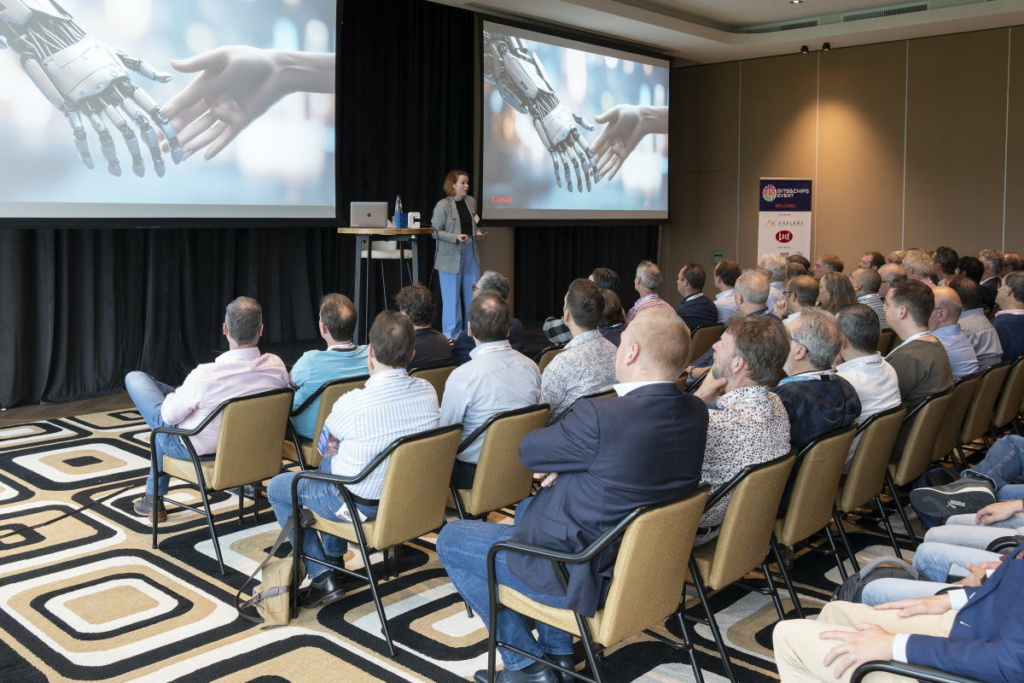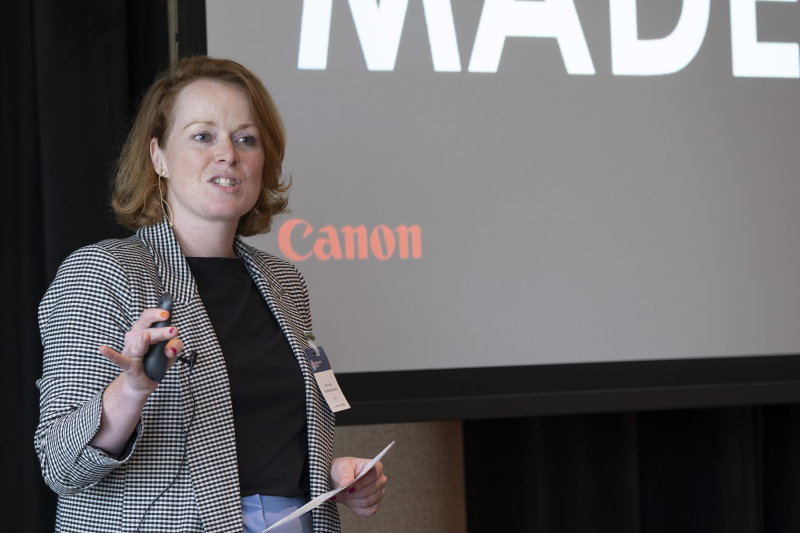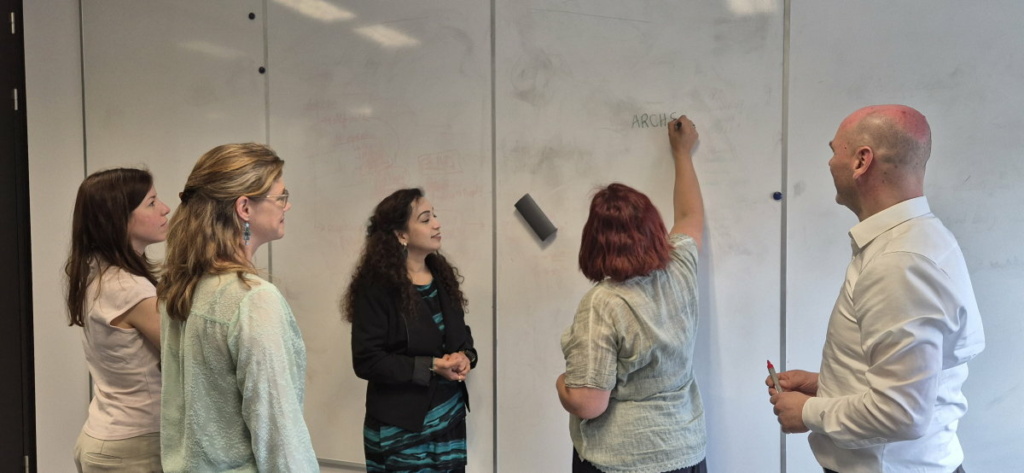Your cart is currently empty!

Your technical talk with impact? 7 tips for no blah blah
How three Bits&Chips Event speakers transformed their presentations at the annual conference and why you might consider coaching too.
It’s one thing to know your subject. It’s another thing entirely to make people care. That’s the challenge of presenting technical content, especially at a high-level conference like the Bits&Chips Event. In a room full of engineers, researchers and tech leaders, you’ve got maybe 30 seconds to capture attention, just a few minutes more to keep it and one chance to share your message persuasively.
So how do you do that? If you’re like Carlijn Compen from Canon Production Printing, Sezen Acur from TNO-ESI or other breakout speakers, the answer is simple: you get coaching. They turned to the official Bits&Chips Event speaker coaching partner Noblahblah.
The result? Talks that don’t just inform, they land. With clarity. With energy. With connection. If you’re a technical professional preparing to present your ideas, whether to peers, leadership or industry audiences, here are seven ways coaching can help you present with confidence, impact and fun.
1. From data to drama: a new way to present
Carlijn Compen gave a keynote at the 2023 Bits&Chips Event. As a leader at Canon, she had no shortage of insights. But turning all those insights into a clear, coherent and compelling story?
“I had so many bits and pieces,” Compen says. “Interesting ideas, but I didn’t have a real story. Howard Lettinga, coach at Noblahblah, helped me bring it together into something strong and original.” Her presentation was the highest-rated keynote at the 2023 conference.
That transformation, from raw content to impactful narrative, is where it starts. The coaching process isn’t about decorating your slides. It’s about helping you define the message that matters most and building a delivery that connects.
“We worked one-on-one,” Compen explains. “Howard helped me with everything: shaping the topic, choosing the angle, rehearsing in stages. It wasn’t just about presenting. It was about building confidence, getting feedback and refining my story.”

2. Engagement: the key to connection
Sezen Acur, a systems engineer at TNO-ESI, took the stage as a breakout speaker at the 2024 Bits&Chips Event. For her, the coaching added a crucial human layer.
“Michiel Kwakkernaat, Noblahblah speaker coach, suggested I start with a brief personal story,” Acur says. “It sounds simple, but it made the audience more engaged and responsive. That small human moment helped my message land.”
Audience connection is often overlooked in technical settings. There’s a myth that the data should ‘speak for itself.’ But in reality, people connect with people. Storytelling, humor, personal moments, rhetorical questions: these are the tools that create engagement.
Another breakout speaker, a research scientist from a multinational who prefers to remain anonymous for this article, echoes the same idea. “Howard gave me a range of tools: asking questions, raising ideas without waiting for answers, even including QR codes on slides to invite interaction. I could pick the ones that suited me. That flexibility made a big difference.”
3. Structure: the hidden secret of compelling talks
A good talk doesn’t just have good content. It flows. It builds. It sticks in your memory. That’s where structure comes in, and again, the coaching delivered.
Compen describes how her various ideas turned into a clear arc. “Howard gave me a framework that made everything fit. It wasn’t rigid. It was shaped around what I wanted to say. And suddenly it all clicked.”
The research scientist was also given a powerful principle: “Two is too little, four is too many. Stick to three.” That simple idea helped organize everything from examples to takeaways. She also learned the value of the Funnel Technique, a template for organizing presentations, by starting wide to pull people in, then narrowing down with clarity and purpose.
These techniques aren’t flashy, but they work. Again and again, they help audiences follow complex content and stay engaged.
4. Making the complex clear
One of the biggest challenges in technical communication is simplifying without oversimplifying. Compen puts it perfectly: “You don’t want to dumb things down. But you also can’t assume people will follow if you just present it as-is. You have to make it land.”
The research scientist found a breakthrough in analogies. “Howard suggested one about droplets of ink, millions of them landing accurately. Like a waterfall. It was beautiful, and I used it in my talk.”
Other suggestions included football matches, skyscrapers, everyday visuals that helped translate technical magnitude into something the audience could see. The result? “I got feedback that people remembered the examples,” she says. “They got the point. That’s what matters.”
5. Confidence is a process, not a personality trait
All three speakers say the same thing: the coaching didn’t just change the presentation, it changed how they felt. “Confidence came from the process,” Compen notes. “We rehearsed. We refined. We got feedback. So by the time I stepped on stage, I knew I was ready.”
Acur agrees. “The audience stayed with me the whole way. I felt I had them. That gave me so much energy.”
And our research scientist? “I had fun. That’s not something I expected to say about preparing a high-stakes talk. But it was energizing. The process gave me insight, tools I still use and a real sense of ownership over the story.”

6. A ripple effect for teams and organizations
The benefits of coaching don’t stop with one presentation. They ripple outwards. Compen points out: “This experience showed me how important it is that more people in technical roles learn how to tell stories and communicate the value of what they’re doing. It’s not just about facts. It’s about meaning.”
Once technical professionals see what’s possible, they want to take it further with follow-up trainings. And organizations benefit from teams that don’t just build great technology, but know how to share it powerfully.
7. If you’re speaking at the Bits&Chips Event (or anywhere), here’s what to do next
You might already know your topic. You might already have your slides. But if you want your audience to listen, engage and remember, then coaching could be the smartest step you take.
It can help you shape your core message and find stories that fit your content and your voice. It can provide tools for clarity, structure and audience engagement. It can help you with real-world rehearsal strategies to find confidence you can feel.
Top image credit: Fotowerkt.nl

